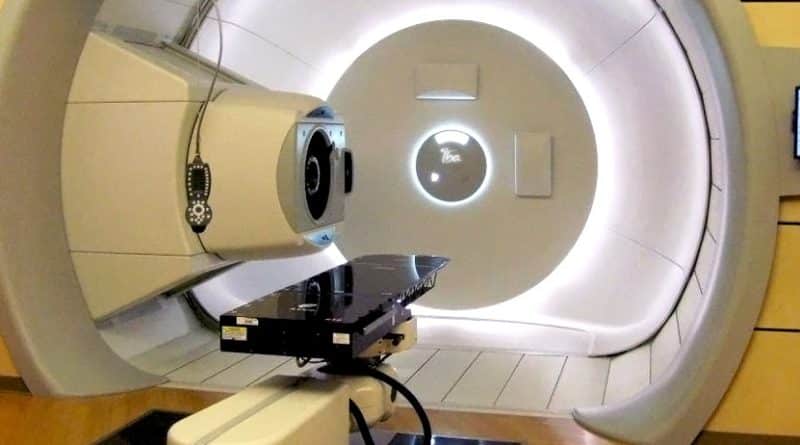
As they say, is new – is well forgotten old. Medicine does not stand still, and new methods of treatment are gradually replacing the old methods. But should we abandon what seem to be obsolete, inefficient or expensive at first glance?
In the past six years, physicist Robert Johnson of the University of California at Santa Cruz is working on a device which fires protons a human skull. A scientist is trying to use protons instead of conventional x-rays to obtain three-dimensional images of the internal organs of patients with cancer.

The prototype can create the image of the contents of the head, a special dummy in about six minutes and to recognize the tumor. And although the machine is still not finalized, in order to accurately make the diagnosis (x-rays have higher resolution), Johnson believes that the image obtained with protons, even blurred, you can use for proton therapy, one of the methods of cancer treatment, more effective than conventional x-rays.
What is proton therapy?
Proton therapy fighting cancer, bombarding tumors with protons. But before doctors can start treatment, they need to develop a plan based on a three-dimensional image of the tumor. Right now, these images are obtained using computed tomography, which uses x-rays. Based on the results of the scan, the doctors calculate how much energy must protons have to cope with a tumor, performing a complex and painstaking work.
Here comes into play the prototype Johnson. If you have an image on the basis of the protons, you can skip unnecessary conversions and calculations, and to develop more accurate and effective treatment plan.
For and against
Have proton therapy has both supporters and critics. The first claim that this method is an advanced form of radiation therapy. It is safer and more effectivethan traditional chemotherapy and radiotherapy. Protons do not damage healthy tissue because doctors can encourage them to release most of their energy to fight cancer cells at a certain depth. X-rays damage tissue, wherever they are, sometimes causing serious side effects. For example, treatment of breast cancer with radiation therapy increases the risk of heart attack due to the proximity of the left breast to the heart.
However, critics of proton therapy say that this method is incredibly expensive. It requires a circular particle accelerator the size of a room, and expensive superconducting magnets. All necessary equipment can cost a lot of money – at least $ 20 million, which is approximately 10 times greater than the cost of conventional x-ray radiation machine. And despite the fact that Medicare covers proton therapy, many patients have problems obtaining insurance payments for such treatment because of the cost of this technique.
Fertile ground for research
This is why researchers such as Johnson, working in this field – they hope to make proton therapy more popular. The prototype Johnson has come a long way. First it was developed by the oncologist Reinhard Schulte from Loma Linda University, who began work with the machine in 1998. While in USA there was only one hospital that used a similar device, installed in Loma Linda in 1990. Since then, proton therapy has become more affordable. In recent years, the company has reduced the cost of five times due to the reduce machines.
By decreasing prices the demand for therapy increased. In the US, only two of the medical center offered proton therapy in 2003, now there are more than 25 years. Since the radiation causes more serious damage to growing organisms, doctors often recommend proton therapy to childrenwith cancer.
The prototype Johnson and Schulte does not fit in the financial framework — it actually makes proton therapy more expensive. But scientists hope that they will be able to create an even more accurate apparatus for proton therapy, which, due to proton imaging, making it more attractive for hospitals.